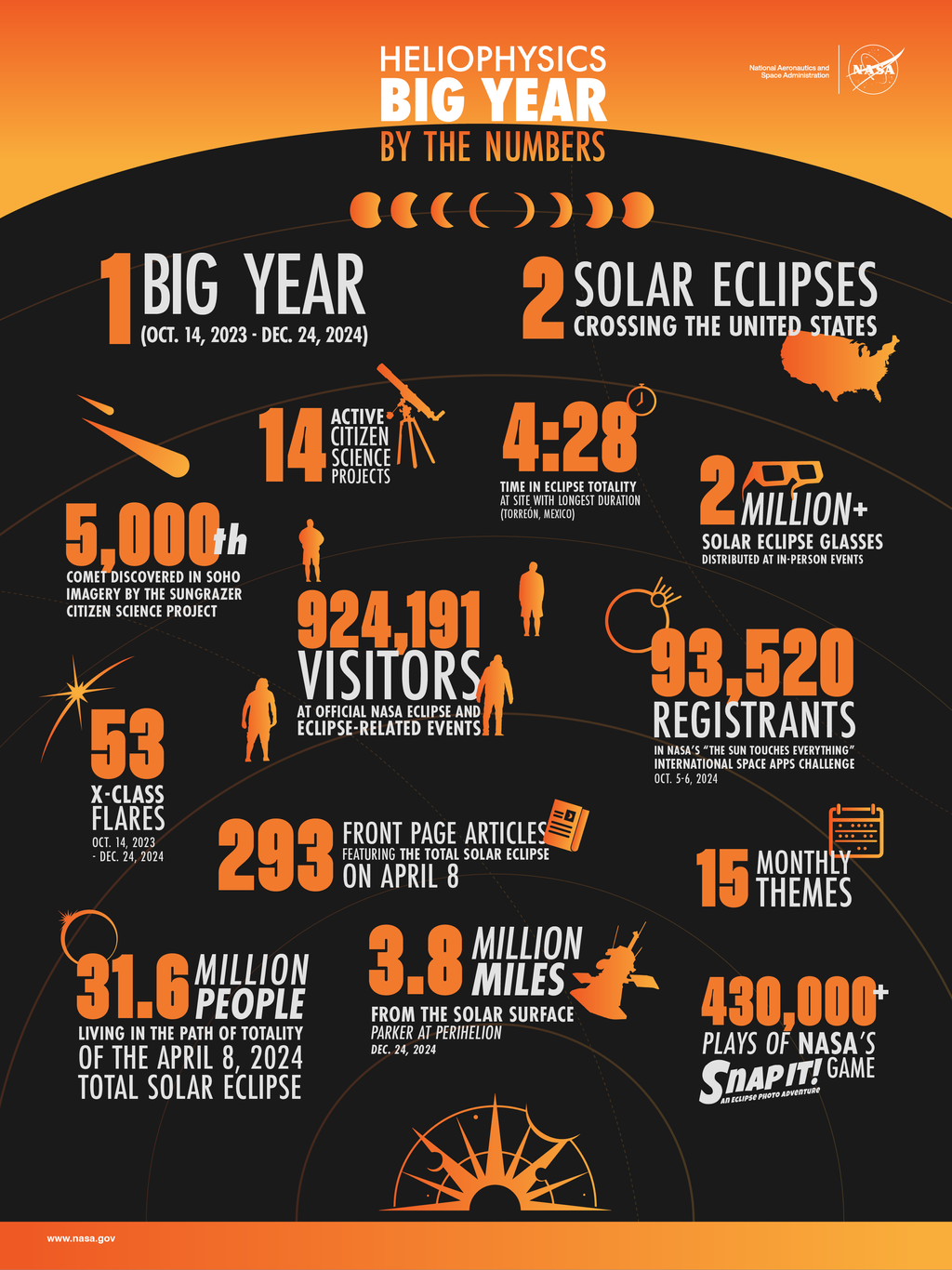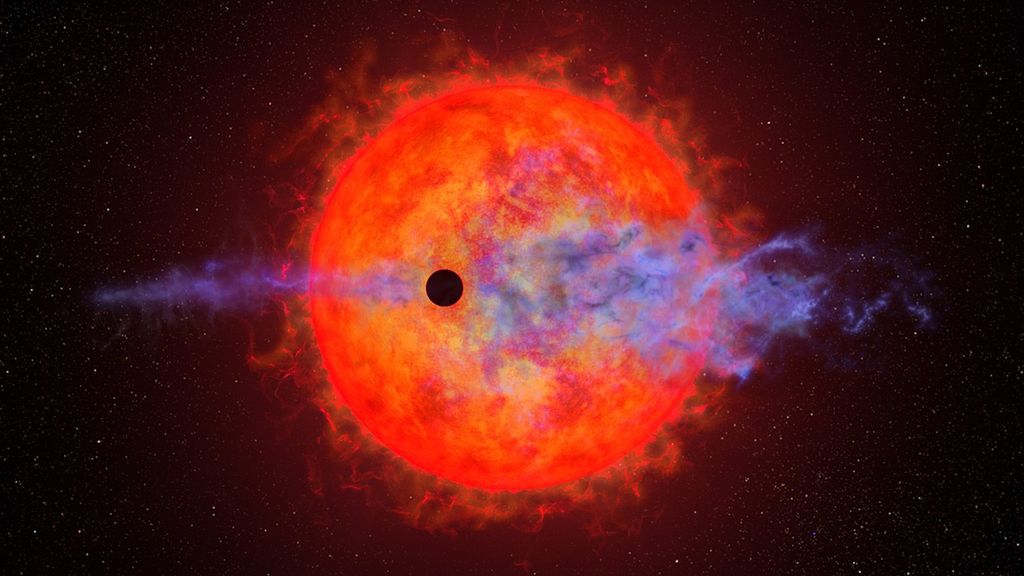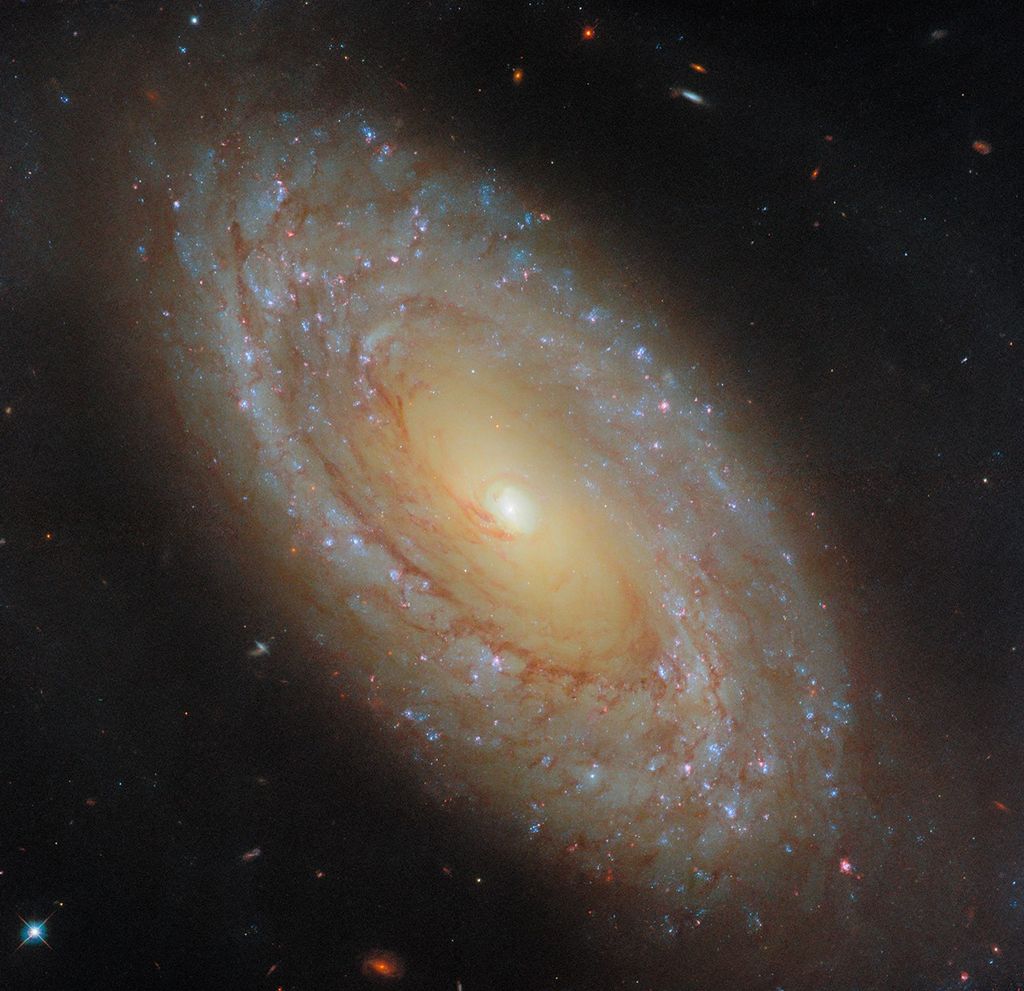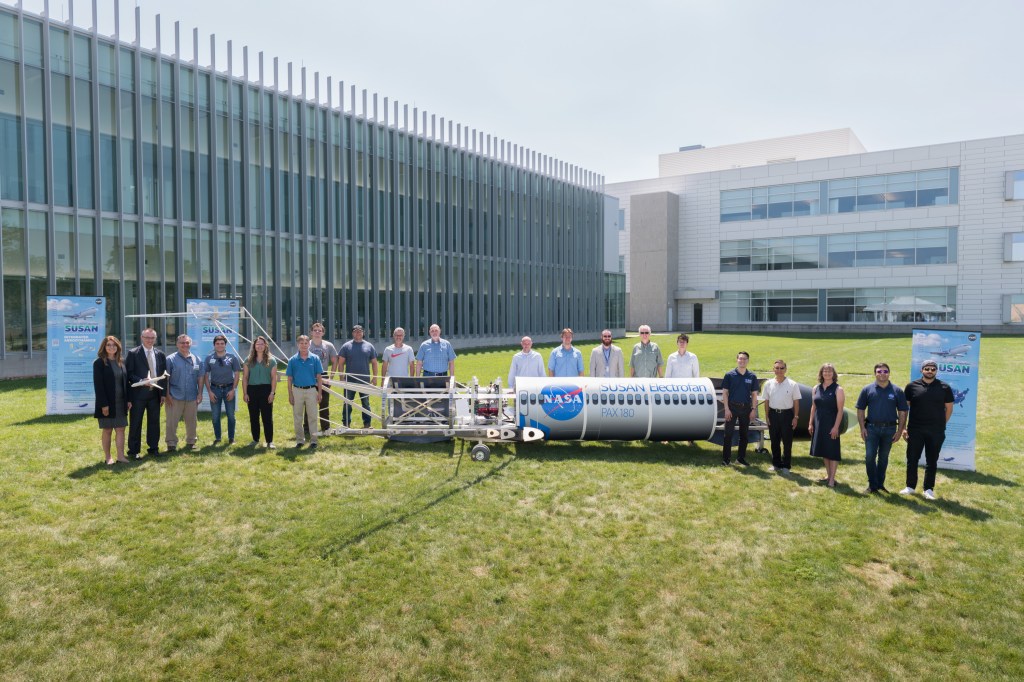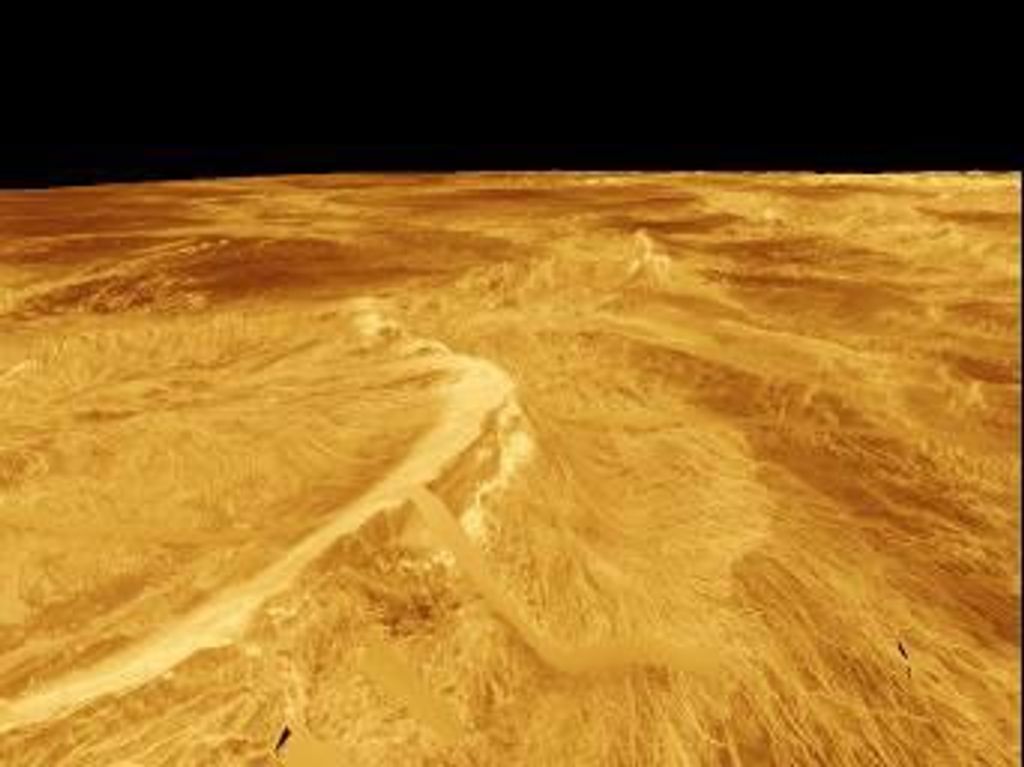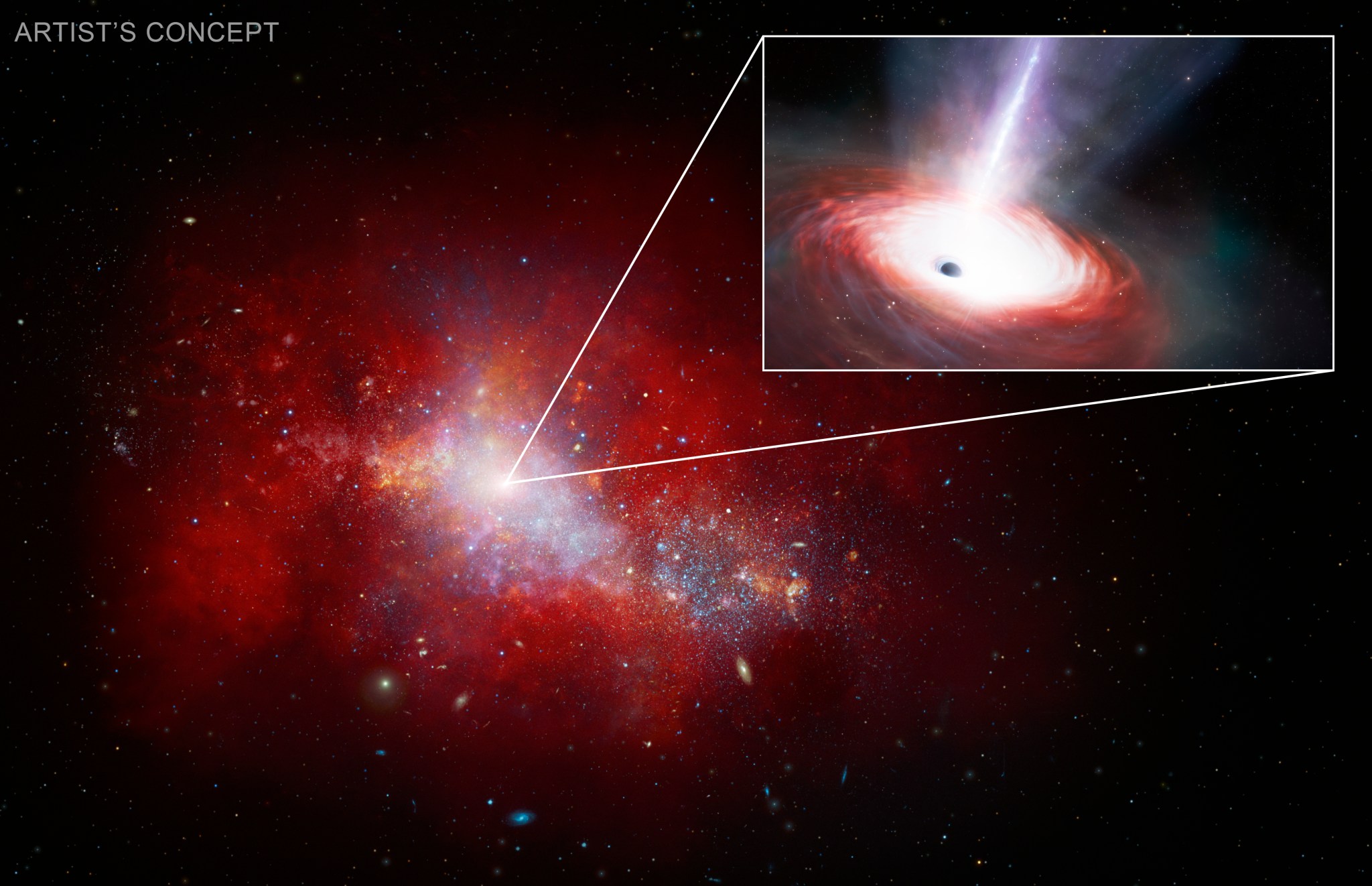
A rapidly feeding black hole at the center of a dwarf galaxy in the early universe, shown in this artist’s concept, may hold important clues to the evolution of supermassive black holes in general.
Using data from NASA’s James Webb Space Telescope and Chandra X-ray Observatory, a team of astronomers discovered this low-mass supermassive black hole just 1.5 billion years after the big bang. The black hole is pulling in matter at a phenomenal rate — over 40 times the theoretical limit. While short lived, this black hole’s “feast” could help astronomers explain how supermassive black holes grew so quickly in the early universe.
Supermassive black holes exist at the center of most galaxies, and modern telescopes continue to observe them at surprisingly early times in the universe’s evolution. It’s difficult to understand how these black holes were able to grow so big so rapidly. But with the discovery of a low-mass supermassive black hole feasting on material at an extreme rate so soon after the birth of the universe, astronomers now have valuable new insights into the mechanisms of rapidly growing black holes in the early universe.
The black hole, called LID-568, was hidden among thousands of objects in the Chandra X-ray Observatory’s COSMOS legacy survey, a catalog resulting from some 4.6 million seconds of Chandra observations. This population of galaxies is very bright in the X-ray light, but invisible in optical and previous near-infrared observations. By following up with Webb, astronomers could use the observatory’s unique infrared sensitivity to detect these faint counterpart emissions, which led to the discovery of the black hole.
The speed and size of these outflows led the team to infer that a substantial fraction of the mass growth of LID-568 may have occurred in a single episode of rapid accretion.
LID-568 appears to be feeding on matter at a rate 40 times its Eddington limit. This limit relates to the maximum amount of light that material surrounding a black hole can emit, as well as how fast it can absorb matter, such that its inward gravitational force and outward pressure generated from the heat of the compressed, infalling matter remain in balance.
These results provide new insights into the formation of supermassive black holes from smaller black hole “seeds,” which current theories suggest arise either from the death of the universe’s first stars (light seeds) or the direct collapse of gas clouds (heavy seeds). Until now, these theories lacked observational confirmation.
The new discovery suggests that “a significant portion of mass growth can occur during a single episode of rapid feeding, regardless of whether the black hole originated from a light or heavy seed,” said International Gemini Observatory/NSF NOIRLab astronomer Hyewon Suh, who led the research team.
A paper describing these results (“A super-Eddington-accreting black hole ~1.5 Gyr after the Big Bang observed with JWST”) appears in the journal Nature Astronomy.
About the Missions
NASA’s Marshall Space Flight Center manages the Chandra program. The Smithsonian Astrophysical Observatory’s Chandra X-ray Center controls science operations from Cambridge, Massachusetts, and flight operations from Burlington, Massachusetts.
The James Webb Space Telescope is the world’s premier space science observatory. Webb is solving mysteries in our solar system, looking beyond to distant worlds around other stars, and probing the mysterious structures and origins of our universe and our place in it. Webb is an international program led by NASA with its partners, ESA (European Space Agency) and CSA (Canadian Space Agency).
Read more from NASA’s Chandra X-ray Observatory.
Learn more about the Chandra X-ray Observatory and its mission here:
News Media Contact
Elizabeth Laundau
NASA Headquarters
Washington, DC
202-923-0167
elizabeth.r.landau@nasa.gov
Lane Figueroa
Marshall Space Flight Center, Huntsville, Alabama
256-544-0034
lane.e.figueroa@nasa.gov



